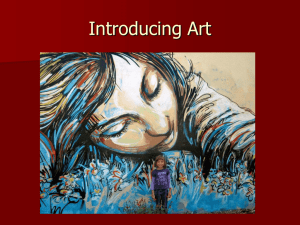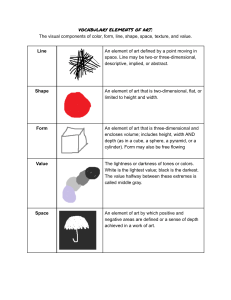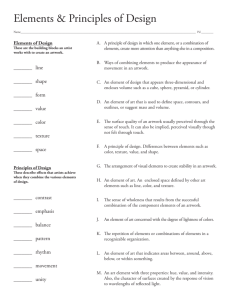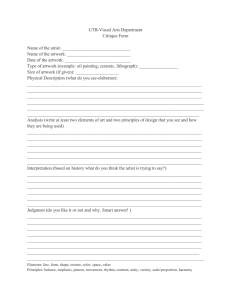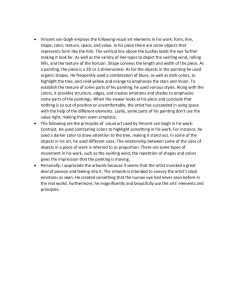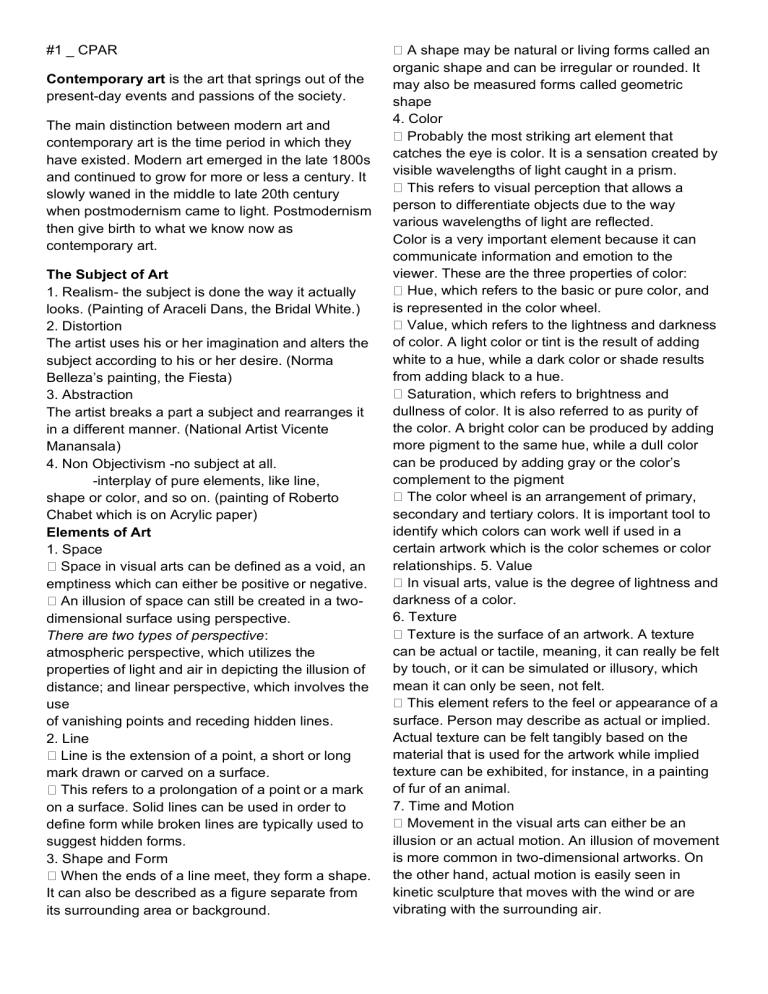
#1 _ CPAR Contemporary art is the art that springs out of the present-day events and passions of the society. The main distinction between modern art and contemporary art is the time period in which they have existed. Modern art emerged in the late 1800s and continued to grow for more or less a century. It slowly waned in the middle to late 20th century when postmodernism came to light. Postmodernism then give birth to what we know now as contemporary art. The Subject of Art 1. Realism- the subject is done the way it actually looks. (Painting of Araceli Dans, the Bridal White.) 2. Distortion The artist uses his or her imagination and alters the subject according to his or her desire. (Norma Belleza’s painting, the Fiesta) 3. Abstraction The artist breaks a part a subject and rearranges it in a different manner. (National Artist Vicente Manansala) 4. Non Objectivism -no subject at all. -interplay of pure elements, like line, shape or color, and so on. (painting of Roberto Chabet which is on Acrylic paper) Elements of Art 1. Space Space in visual arts can be defined as a void, an emptiness which can either be positive or negative. An illusion of space can still be created in a twodimensional surface using perspective. There are two types of perspective: atmospheric perspective, which utilizes the properties of light and air in depicting the illusion of distance; and linear perspective, which involves the use of vanishing points and receding hidden lines. 2. Line Line is the extension of a point, a short or long mark drawn or carved on a surface. This refers to a prolongation of a point or a mark on a surface. Solid lines can be used in order to define form while broken lines are typically used to suggest hidden forms. 3. Shape and Form When the ends of a line meet, they form a shape. It can also be described as a figure separate from its surrounding area or background. A shape may be natural or living forms called an organic shape and can be irregular or rounded. It may also be measured forms called geometric shape 4. Color Probably the most striking art element that catches the eye is color. It is a sensation created by visible wavelengths of light caught in a prism. This refers to visual perception that allows a person to differentiate objects due to the way various wavelengths of light are reflected. Color is a very important element because it can communicate information and emotion to the viewer. These are the three properties of color: Hue, which refers to the basic or pure color, and is represented in the color wheel. Value, which refers to the lightness and darkness of color. A light color or tint is the result of adding white to a hue, while a dark color or shade results from adding black to a hue. Saturation, which refers to brightness and dullness of color. It is also referred to as purity of the color. A bright color can be produced by adding more pigment to the same hue, while a dull color can be produced by adding gray or the color’s complement to the pigment The color wheel is an arrangement of primary, secondary and tertiary colors. It is important tool to identify which colors can work well if used in a certain artwork which is the color schemes or color relationships. 5. Value In visual arts, value is the degree of lightness and darkness of a color. 6. Texture Texture is the surface of an artwork. A texture can be actual or tactile, meaning, it can really be felt by touch, or it can be simulated or illusory, which mean it can only be seen, not felt. This element refers to the feel or appearance of a surface. Person may describe as actual or implied. Actual texture can be felt tangibly based on the material that is used for the artwork while implied texture can be exhibited, for instance, in a painting of fur of an animal. 7. Time and Motion Movement in the visual arts can either be an illusion or an actual motion. An illusion of movement is more common in two-dimensional artworks. On the other hand, actual motion is easily seen in kinetic sculpture that moves with the wind or are vibrating with the surrounding air.

